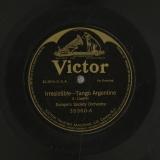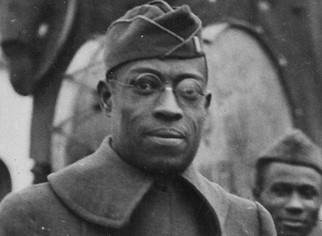Irresistible
https://hearingtheamericas.org/s/the-americas/item-set/67"Irresistible" is from James Reese Europe's first record; the song on the other side was a Brazilian maxixe called "Amapa." Europe's band played these songs as accompaniment for dancing stars Irene and Vernon Castle, who were at this time popularizing these South American dances in New York City. The recording demonstrates that as it circulated transnationally, the tango was identified with the habanera rhythm, which is here performed on the piano(s). The instrumentation on the record is quite different from Argentine tangos of this period, which would not have featured percussion instruments or banjo mandolins. However, "Irresistible" was not the first recording of an Argentine tango by a North American band. As early as 1906, the John Philips Sousa band had recorded several tangos by Argentine composers for Victor. Interestingly, James Reese Europe understood the tango as a music of the African diaspora. As he put it, “both the tango and the foxtrot are really negro dances.”


